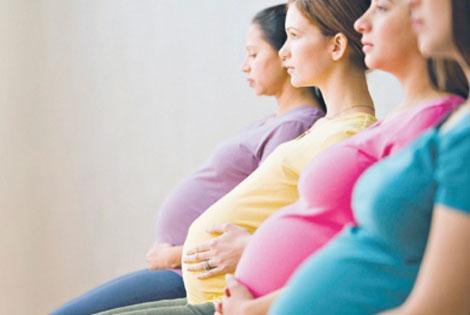Experts are concerned the new international criteria will lead to significant overdiagnosis of gestational diabetes and the further medicalisation of pregnancy.
The guidelines suggest universal screening using a lower diagnostic criterion and one blood test result, instead of two or more.
One critic of the proposed guidelines, University of Auckland diabetes specialist Professor Tim Cundy, said more women would ultimately be diagnosed if the criteria were lowered.
Another major concern was the high false-positive results associated with the oral blood glucose test, which is already used in diagnosis including in Australia.
He said with more women diagnosed, more pregnancies would be deemed higher risk which could lead to more interventions, including induced labours and caesarean sections.
"It will medicalise a lot of pregnancies that are probably pretty normal," he told AAP.
"The evidence that it will be of overall benefit is very thin.
"I think something of this magnitude will impact very much on the whole experience of pregnancy for a lot of women.
A study published in Diabetic Medicine this year by Prof Cundy concluded the main benefits of treating gestational diabetes were lower birth weight babies and fewer obstetric emergencies involving infants getting stuck in the birth canal.
He questioned whether those benefits justified the mass expansion of the number of women diagnosed with gestational diabetes.
Researcher Ray Moynihan, who addressed the issue in the Medical Journal of Australia on Monday, said labelling well people as sick was problematic.
"There is evidence suggesting that the act of labelling someone can bring harm," he told AAP.
The Royal Australian and New Zealand College of Obstetricians and Gynaecologists vice president, Professor Michael Permezel, agreed the blood glucose test could be improved.
He said between three and four per cent more women would be diagnosed with gestational diabetes under the new criteria but research showed those women had better outcomes when treated.
Prof Permezel said studies showed women treated for mild diabetes in pregnancy had less pre-eclampsia - high blood pressure - and fewer caesarean sections.
"It doesn't necessarily lead to more interventions, it can actually lead to fewer caesarean sections," he told AAP.
"Most people realise that including this group with milder diabetes seems to have more positives than negatives."
He said the international guidelines were currently being assessed for their suitability in Australia and New Zealand.
Australian women are already routinely screened for gestational diabetes at 26 to 28 weeks of gestation.
Women diagnosed with gestational diabetes must monitor their diet but only a small proportion require insulin.



















__small.png)










